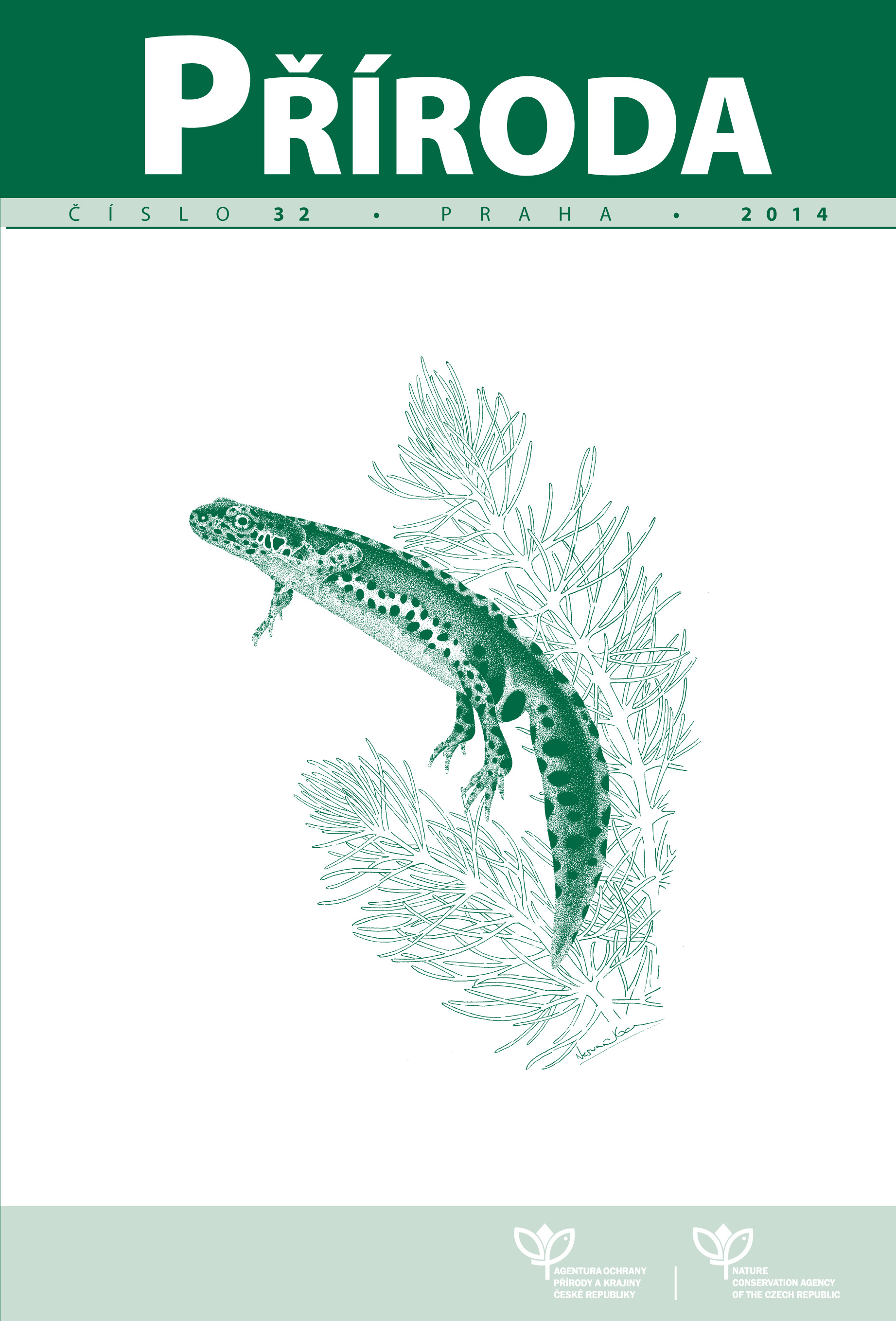Studium flóry a vegetace v širším okolí lomu v Horním Lánově jako podklad pro management druhů a společenstev
Flora and vegetation study near lime quarry in Horní Lánov as a groundwork for species and phytocoenose management
Klíčová slova:
flora, Horní Lánov, lime quarry, mapping, statistics, vegetation, mapování, statistika, vápencový lom, vegetace, flóraAbstrakt
V průběhu let 2002 až 2012 probíhal výzkum flóry a vegetace v širším okolí lomu v Horním Lánově v Podkrkonoší (na ploše 106,4 ha). Podloží z dolomitického vápence (v Krkonoších a Podkrkonoší vzácné), členitý geomorfologický terén a antropické vlivy výrazně ovlivňují biodiverzitu lokality. Jedná se o botanicky známé, velmi cenné území, ve kterém došlo zejména vlivem antropických zásahů k výrazným změnám ve vegetačním krytu. V příspěvku jsou shrnuty dostupné floristické poznatky (od r. 1882). Mnoho druhů ve 20. století vymizelo (Euphrasia corcontica, E. micrantha, E. curta subsp. glabrescens, Gentianella campestris subsp. campestris, G. praecox subsp. bohemica, Dactylorhiza sambucina, Muscari comosum, Polygala amarella subsp. amarella). Negativně působí především postupující těžba dolomitického vápence, zemědělství (nejvíce dřívější meliorace, zcelování pozemků, v současnosti též absence obhospodařování) a nevhodné hospodaření v lesích. Těžba sice vytváří nové biotopy, ale zároveň likviduje přirozené lesní porosty s výskytem botanicky unikátních druhů. Řešená oblast se dosud vyznačuje velkým počtem různých lesních i nelesních stanovišť a vysokým počtem i pokryvností zvláště chráněných a ohrožených druhů rostlin, které se jinde v oblasti nevyskytují nebo jen v menších populacích (Cephalanthera damasonium, Corallorhiza trifida, Epipactis palustris, Inula salicina subsp. salicina). Proto bylo hlavním cílem studií shromáždit poznatky o současném i historickém stavu flóry a vegetace. Ty v budoucnu poslouží také ke stanovení optimálního managementu druhů i společenstev. Charakterizována byla vegetace ve smyslu metodiky mapování biotopů NATURA 2000 v 37 vylišených odlišných segmentech. V nejcennějších a typických biotopech bylo sepsáno a statisticky zhodnoceno 93 fytocenologických snímků. V každém segmentu byly prováděny inventarizační průzkumy. Podrobně byl zdokumentován výskyt 48 ochranářsky cenných druhů cévnatých rostlin podle práce Procházka (2001). Graficky a statisticky jsou v příspěvku syntetizovány výsledky do r. 2010. Pozornost byla věnována i invazním a expanzním taxonům. Na základě předložených výsledků došlo v květnaté bučině nad lomem v r. 2011 k pozastavení těžby. Do článku bylo v dodatku doplněno několik ochranářsky významných druhů nově nalezených při průzkumech prováděných v letech 2011 a 2012.
Abstract
Between 2002 and 2012, a flora and vegetation research project was undertaken near a lime-pit in Horní Lánov (in an area of 106.4 hectares). Local biodiversity is being distinctively influenced by the specific geological conditions and various geomorphologic factors that are present in the local environment. The subsoil is formed from the dolomitic limestone, which is very rare in the Giant Mts. and its foothills. The botanical point of view places high value on this geographical area due to anthropic influences and the significant changes in vegetation cover that have taken place. The article summarizes the available floristic data discovered since 1882. A number of species died out during the 20th century (e.g. Euphrasia corcontica, E. micrantha, E. curta subsp. glabrescens, Gentianella campestris subsp. campestris, G. praecox subsp. bohemica, Dactylorhiza sambucina, Muscari comosum, Polygala amarella subsp. amarella). The progressive exploitation of the areas of dolomitic limestone, agriculture (especially the former melioration, due to the absence of any management) and unsuitable management of the forests have had a hugely negative influence. Although this exploitation forms new biotopes, it does however destroy the forest which holds a number of unique botanical species. The studied area consists of a typically large amount of forest as well as non-forested areas and a high number of especially protected and endangered species, which do not appear anywhere else, or only grow in small populations (e.g. Cephalanthera damasonium, Corallorhiza trifida, Epipactis palustris, Inula salicina subsp. salicina). The main aim was to gather the knowledge of the contemporary and historical state of the flora and vegetation in the area. The results are designed to serve as groundwork for species and phytocoenose management. Detailed inventories in 37 determined segments were executed according to the methodology of biotope mapping NATURA 2000. Ninety-three phytocoenological relevés were recorded and statistically evaluated in the most valuable and typical biotopes. The occurrence of 48 vascular plant species, valuable from a conservational point of view, (according to Procházka 2001) was documented. This article contains graphically and statistically synthesized results found up until 2010. Particular attention was paid to the invasive and expansive species. The changes in species biodiversity of this area since 1882 were documented. Due to the results of this study, the exploitation in the herb-rich beech forests in the area above the lime-pit was stopped. As a supplement to this article the newly founded species from the research carried out between 2011 and 2012 were added.
